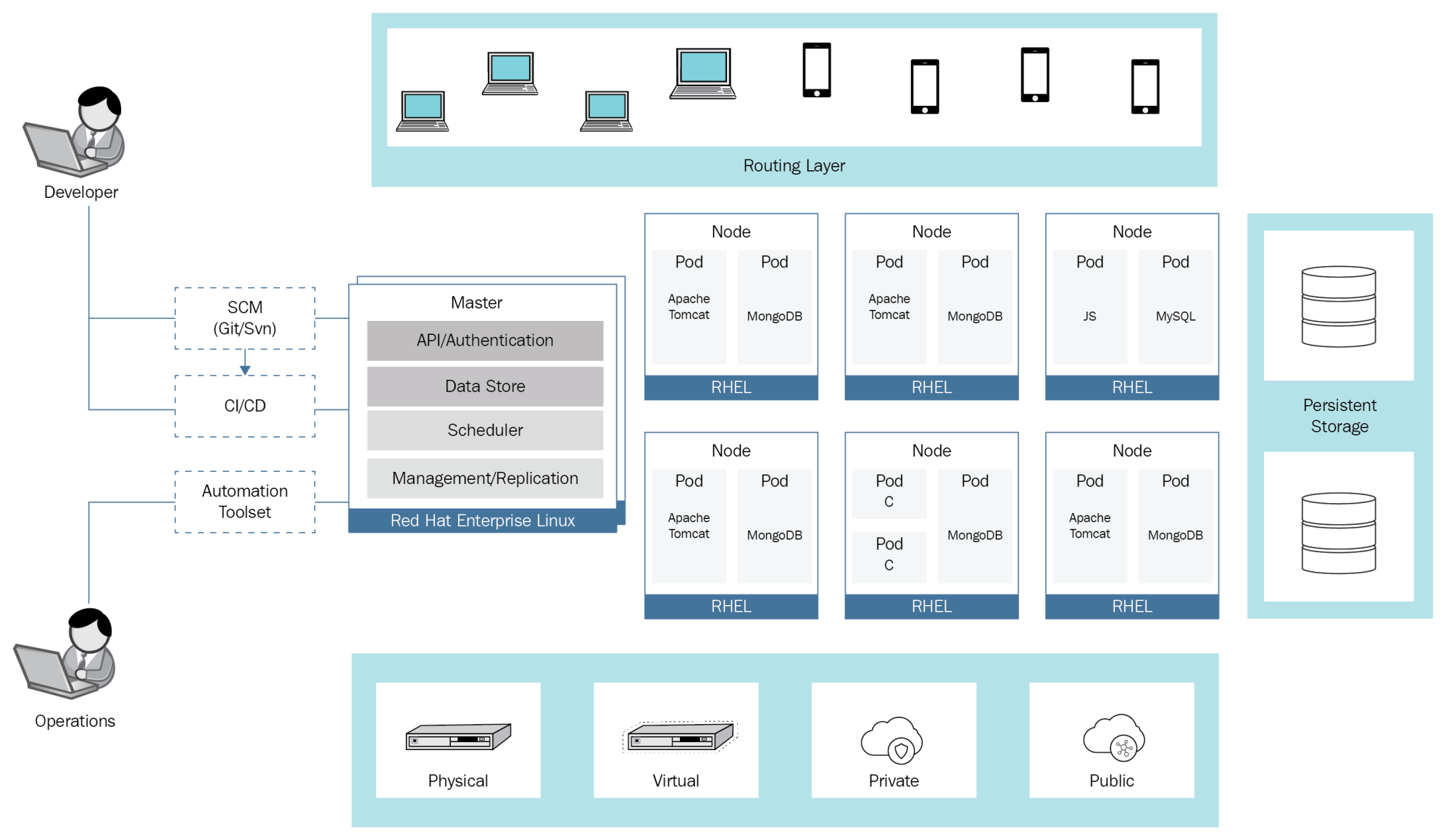The OpenShift Container platform is both simple and complex when it comes to OpenShift components and overall architecture. It is complex in that it involves a lot of components interconnected with each other, but OpenShift is simple in the sense that all its components work independently of each other, and work seamlessly if something fails:

OpenShift components
OpenShift and Kubernetes have most architecture components in common, such as:
- OpenShift masters
- OpenShift nodes
- Etcd as a key-value store
Components that are unique to OpenShift are:
- Router as ingress traffic control
- OpenShift Internal Registry
The following diagram describes the OpenShift container platform from an architectural point of view:

OpenShift architecture
OpenShift is built on top of Docker and Kubernetes, sometimes referred to as Kubernetes++. In addition to the Docker and Kubernetes...



